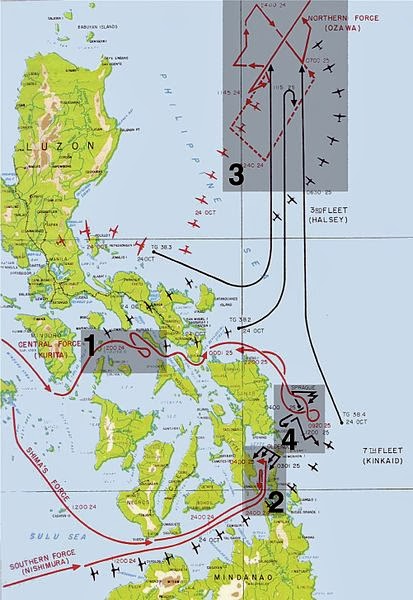Of the five American admirals lost during World War II – the only war
in which we lost any – two were killed in action in the same desperate surface engagement. It was also
the only time in our history that two flag officers – each posthumously awarded
the Medal of Honor – fell on the same day, in the same battle. Part of the
costly 6-month struggle for
Guadalcanal, the
furious and seemingly hopeless night battle of Friday, November 12-13, 1942 and
the 48 hours of combat to follow – the Naval Battle of Guadalcanal - marked a
turning point in the campaign. Defeat was no longer a real possibility. Few now recall how desperate those days were. The
opening phase of that terrible night battle witnessed both heroism and mistakes of deployment and maneuver were made
on both sides, but no one deserves more credit for the ultimate outcome - strategic victory - than
does Daniel Judson Callaghan.
Born in
San Francisco on July 26, 1890,
Dan Callaghan came from a religious Catholic family that had immigrated to the
United States fifty years earlier from
County Cork, Ireland. Educated in parochial
schools in the Bay Area, and inspired by Admiral James Raby, an uncle who had
attended
Annapolis, Dan won a senatorial
appointment as first alternate to the
Naval Academy,
where he quickly earned a reputation for his steady and serious demeanor. He graduated
#38 (of 193) in the Class of 1911, which also included his friend, Norman
“Scotty” Scott of Indiana who ranked near the bottom of their class.
Transferred to the cruiser
New
Orleans as executive officer in 1916, he spent
World War I on convoy escort duty and was promoted to Lieutenant in March 1918,
followed by promotion to Lt. Commander in 1921. By1938, he was serving as Naval Aide to
President Roosevelt (above photo with the King and Queen of Great Britain). Realizing that war was inevitable, however, he pushed hard
for a transfer and in May of 1941, was named skipper of the 10,000-ton heavy
cruiser
USS San Francisco (CA-38). Known in the Navy as
“Uncle Dan”, he was in
Pearl Harbor
for an overhaul on December 7, 1941 and was untouched.
Promoted to Rear Admiral, Dan Callaghan was next appointed Chief of
Staff to Vice Admiral Robert L. Ghormley, newly named Commander, South Pacific
Area. When Ghormley was relieved, Admiral William “Bull” Halsey took over and Callaghan
took command of a cruiser Task Force with his flag on the
San Francisco. On the night of November 12-13, 1942, a powerful Japanese force of battleships, cruisers and destroyers came down the 'slot' to pound Henderson Field and knock it out once and
for all.
Callaghan deployed his ships according to Battle Disposition “Baker
One”, a single column of three groups - four destroyers in the Van Unit,
followed by the five cruisers in the Base Unit, with four destroyers in the
Rear Unit. This arrangement facilitated ease of navigation and maneuver in the
narrow channels near
Guadalcanal. The light
cruiser USS
Helena spotted the enemy early in the battle, but with the
chance for surprise lost, the battle quickly became what one sailor described
as, “a barroom brawl after the lights have been shot out.”
Callaghan realized that survival depended on maintaining the fire of
his largest ships even at the risk of friendly fire. He issued his final
command to the gunnery officer, “We Want the Big Ones; Get the Big Ones First!”
It was both an order and a prayer. The
Japanese battleships continued to pound
San Francisco, which suffered 45 large caliber and countless smaller hits during the
battle. There was undoubtedly friendly fire in the night action. Two minutes later, Callaghan was dead along with
Pearl
Harbor Medal of Honor hero Captain Cassin Young. The badly damaged
USS
San Francisco fought the enemy to a standstill, helped cripple the Japanese Battleship
Hiei
sank a destroyer and was still on station when the enemy withdrew. Many crewmen were decorated.
Adm. Norman Scott
It was one of the most sunning reversals in naval history, evocative of the Battle of Samar 25 October 1944, also characterized by a great disparity in forces. But the cost of stopping the enemy was very heavy. In addition to the
loss of several destroyers – along with their captains - the
USS Atlanta was
lost along with Dan's classmate and friend Admiral Norman "Scotty" Scott, commanding the other surface cruiser Task Force. During the battle the cruisers
USS Portland and
Juneau were badly damaged,
and the latter was sunk the next day by enemy submarine
I-26 along with Captain Lyman K. Swensen and nearly all hands, including all five Sullivan brothers.






















































